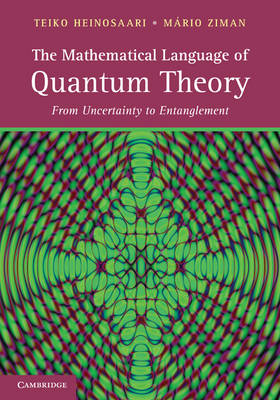: 2025
: 2024
: 2023
: 2022
: 2021
: 2020
: 2019
: 2018
: 2017
: 2016
: 2015
: 2014
: 2013
: 2012
: 2011
: 2010
: 2009
: 2008
: 2007
:
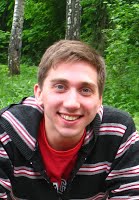 17.12.2012 Group update
17.12.2012 Group update
A new postdoctoral researcher Sergey N. Philippov has joined our group. He graduated in May this year at Moscow Institute of Physics and Technology under the supervision of Vladimir Man'ko. Welcome. |
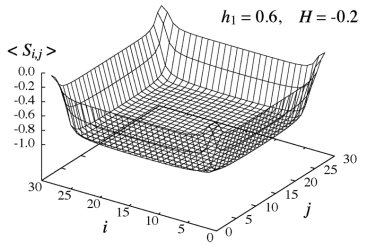 12.12.2012 Research
12.12.2012 Research
Capillary condensation in a square geometry with surface fields
We study the influence of wetting on capillary condensation for a simple fluid in a square geometry with surface fields, where the reference system is an infinitely long slit. The corner transfer matrix renormalization group method has been extended to study a two-dimensional Ising model confined in an L×L geometry with equal surface fields. Our results have confirmed that in both geometries the coexistence line shift is governed by the same scaling powers, but their prefactors are different.
by
M. Zubaszewska, A. Gendiar, and A. Drzewiński
Phys. Rev. E 86, 062104 (2012) |+++| DARG (VEGA-2/0074/12), COQI (APVV-0646-10) |
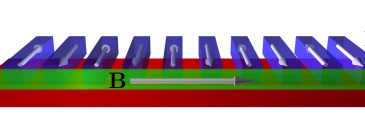 5.12.2012 Research
5.12.2012 Research
Transition from Fractional to Majorana Fermions in Rashba Nanowires
We study hybrid superconducting-semiconducting nanowires in the presence of Rashba spin-orbit interaction as well as helical magnetic fields. We show that the interplay between them leads to a competition of phases with two topological gaps closing and reopening, resulting in unexpected reentrance behavior. In addition to the topological phase with localized Majorana fermions (MFs) we find new phases characterized by fractionally charged fermion (FF) bound states of Jackiw-Rebbi type. The system can be fully gapped by the magnetic fields alone, giving rise to FFs that transmute into MFs upon turning on superconductivity. We find explicit analytical solutions for MF and FF bound states and determine the phase diagram numerically by determining the corresponding Wronskian null space. We show by renormalization group arguments that electron-electron interactions enhance the Zeeman gaps opened by the fields.
by
Jelena Klinovaja, Peter Stano, and Daniel Loss
Phys. Rev. Lett. 109, 236801 (2012) |+++| SCIEX |
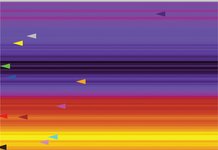 2.12.2012 Research
2.12.2012 Research
Suppression of interactions in multimode random lasers in the Anderson localized regime
Understanding random lasing is a formidable theoretical challenge. Unlike conventional lasers, random lasers have no resonator to trap light, they are highly multimode with potentially strong modal interactions, and they are based on disordered gain media, where photons undergo random multiple scattering. Interference effects notoriously modify the propagation of waves in such random media, but their fate in the presence of nonlinearity and interactions is poorly understood. Here, we present a semiclassical theory for multimode random lasing in the strongly scattering regime. We show that Anderson localization, a wave interference effect, is not affected by the presence of nonlinearities. To the contrary, its presence suppresses interactions between simultaneously lasing modes. Consequently, each lasing mode in a strongly scattering random laser is given by a single long-lived, Anderson localized mode of the passive cavity, the frequency and wave profile of which do not vary with pumping, even in the multimode regime when modes spatially overlap.
by
Peter Staňo, and Philippe Jacquod
Nature Photonics 7, pp66–71 (2013), (doi:10.1038/nphoton.2012.298) |+++| QESSENCE (2010-248095, APVV DO7RP-0002-10), COQI (APVV-0646-10), META-QUTE (ITMS NFP 26240120022) |
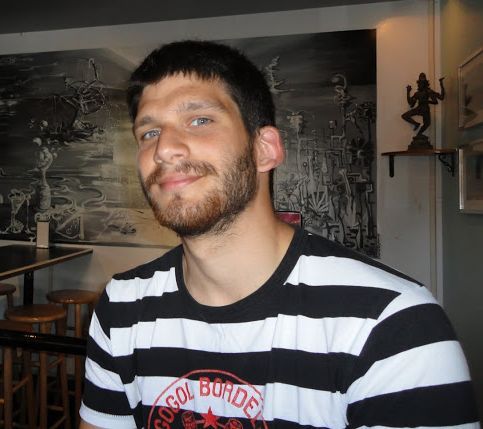 28.11.2012 Research
28.11.2012 Research
Quantum channels with memory
Quantum memory channels represent a very general, yet simple and comprehensible model for causal processes. As such they have attracted considerable research interest, mostly aimed on their transfer capabilities and structure properties. Most notably it was shown that memory channels can be implemented via physically naturally motivated collision models. We also define the concept of repeatable channels and show that only unital channels can be implemented repeatably with pure memory channels. In the special case of qubit channels we also show that every unital qubit channel has a repeatable implementation. We also briefly explore the possibilities of stroboscopical simulation of channels and show that all random unitary channels can be stroboscopically simulated. Particularly in qubit case, all indivisible qubit channels are also random unitary, hence for qubit all indivisible channels can be stroboscopically simulated. Memory channels also naturally capture the framework of correlated experiments. We develop methods to gather and interpret data obtained in such setting and in detail examine the two qubit case. We also show that for control unitary interactions the measured data will never contradict a simple unitary evolution. Thus no memory effects can be spotted then.
by
Tomáš Rybár
Acta Physica Slovaca 62, No.3, 275-346 (2012) |+++| QESSENCE (2010-248095, APVV DO7RP-0002-10), HIP (FP7-ICT-2007-C-221889), QIAM (APVV-0673-07), QWOSSI (APVV LPP-0264-07), TEQUDE (VEGA 2/0127/11), META-QUTE (ITMS NFP 26240120022), COST MP1006 |
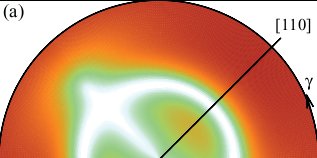 28.11.2012 Research
28.11.2012 Research
Theory of spin relaxation in two-electron laterally coupled Si/SiGe quantum dots
Highly accurate numerical results of phonon-induced two-electron spin relaxation in silicon double quantum dots are presented. The relaxation, enabled by spin-orbit coupling and the nuclei of 29Si (natural or purified abundance), is investigated for experimentally relevant parameters, the interdot coupling, the magnetic field magnitude and orientation, and the detuning. We calculate relaxation rates for zero and finite temperatures (100 mK), concluding that our findings for zero temperature remain qualitatively valid also for 100 mK. We confirm the same anisotropic switch of the axis of prolonged spin lifetime with varying detuning as recently predicted in GaAs. Conditions for possibly hyperfine-dominated relaxation are much more stringent in Si than in GaAs. For experimentally relevant regimes, the spin-orbit coupling, although weak, is the dominant contribution, yielding anisotropic relaxation rates of at least two orders of magnitude lower than in GaAs.
by
Martin Raith, Peter Stano, and Jaroslav Fabian
Phys. Rev. B 86, 205321 (2012) |+++| QESSENCE (2010-248095, APVV DO7RP-0002-10), COQI (APVV-0646-10), META-QUTE (ITMS NFP 26240120022), CE SAS QUTE, SCIEX |
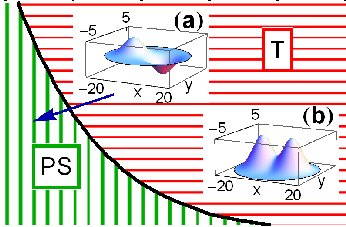 26.11.2012 Research
26.11.2012 Research
Spin ordering in magnetic quantum dots: From core-halo to Wigner molecules
The interplay of confinement and Coulomb interactions in quantum dots can lead to strongly correlated phases differing qualitatively from the Fermi liquid behavior. We explore how the presence of magnetic impurities in quantum dots can provide additional opportunities to study correlation effects and the resulting ordering in carrier and impurity spins. By employing exact diagonalization we reveal that seemingly simple two-carrier quantum dots lead to a rich phase diagram. We propose experiments to verify our predictions; in particular, we discuss interband optical transitions as a function of temperature and magnetic field.
by
R. Oszwałdowski, P. Stano, A. G. Petukhov, and Igor Žutić
Phys. Rev. B 86, 201408(R) (2012) |+++| QESSENCE (2010-248095, APVV DO7RP-0002-10), COQI (APVV-0646-10), META-QUTE (ITMS NFP 26240120022) SCIEX |
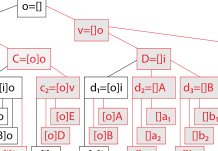 16.11.2012 Research
16.11.2012 Research
Criticality without Frustration for Quantum Spin-1 Chains
Frustration-free (FF) spin chains have a property that their ground state minimizes all individual terms in the chain Hamiltonian. We ask how entangled the ground state of a FF quantum spin-s chain with nearest-neighbor interactions can be for small values of s. While FF spin-1/2 chains are known to have unentangled ground states, the case s=1 remains less explored. We propose the first example of a FF translation-invariant spin-1 chain that has a unique highly entangled ground state and exhibits some signatures of a critical behavior. The ground state can be viewed as the uniform superposition of balanced strings of left and right brackets separated by empty spaces. Entanglement entropy of one half of the chain scales as 1/2log(n)+O(1), where n is the number of spins. We prove that the energy gap above the ground state is polynomial in 1/n. The proof relies on a new result concerning statistics of Dyck paths which might be of independent interest.
by
Sergey Bravyi, Libor Caha, Ramis Movassagh, Daniel Nagaj, and Peter W. Shor
Phys. Rev. Lett. 109, 207202 (2012) |+++| QESSENCE (2010-248095, APVV DO7RP-0002-10), COQI (APVV-0646-10), QWAC (APVV-LPP-0430-09) |
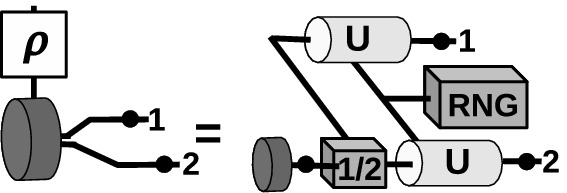 12.11.2012 Research
12.11.2012 Research
Direct estimation of decoherence rates
The decoherence rate is a nonlinear channel parameter that describes quantitatively the decay of the off-diagonal elements of a density operator in the decoherence basis. We address the question of how to experimentally access such a nonlinear parameter directly without the need for complete process tomography. In particular, we design a simple experiment working with two copies of the channel, in which the registered mean value of a two-valued measurement directly determines the value of the average decoherence rate. No prior knowledge of the decoherence basis is required.
by
Vladimír Bužek, Peter Rapčan, Jochen Rau, and Mário Ziman
Phys. Rev. A 86, 052109 (2012) |+++| QESSENCE (2010-248095, APVV DO7RP-0002-10), VEGA-2/0092/11, COQI (APVV-0646-10), SCIEX |
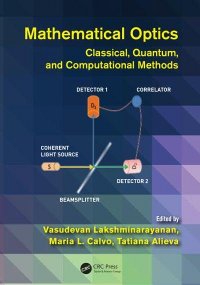 6.11.2012 Research
6.11.2012 Research
Quantum Memory Channels in Quantum Optics
Chapter published in Mathematical Optics: Classical, Quantum, and Computational Methods (edited by V. Lakshminarayanan, M. L. Calvo and T.Alieva, CRC Press Inc, 2012)
by Vladimír Bužek, Tomáš Rybár, and Mário Ziman
|+++| META-QUTE (ITMS NFP 26240120022) HIP (221889), CE SAV QUTE, SCIEX |
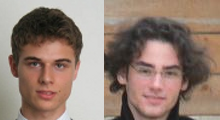 1.10.2012 Group
1.10.2012 Group
Jozef Genzor and Libor Caha has started their graduate studies in our group under the supervisions of Vladimír Bužek and Daniel Nagaj (Mário Ziman), respectively. Jozef is supposed to work on quantum complex networks and Libor on quantum 2-SAT problem. Welcome on board. |
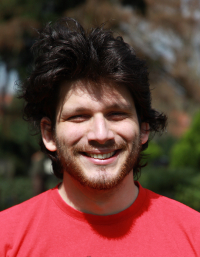 14.9.2012 Group
14.9.2012 Group
Tomáš Rybár has left the group. Next two years he is going to spend as a postdoc in the group of Prof. Reinhard Werner in Hannover. We wish him a lot of fun and successes. |
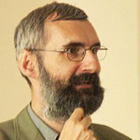 27.8.2012 Lectures (in Slovak)
27.8.2012 Lectures (in Slovak)
Galileo, Descartes a Newton as the creators of the language of physics. In the week 27.-31.8.2012 Prof. Ladislav Kvasz (Charles University, Prague), winner of Fernando Gil International Prize for Philosophy of Science 2010, will give a series of five lectures (in Slovak) devoted to the role of scientific discoveries in the language of science. Everyone is kindly welcome. Time: Monday- Friday, 13:30-15:00 (no lecture on Wednesday, on Tuesday also 10:00-11:30) Place: QUTE Auditorium :: directions :: Abstract (in Slovak): Často sa stáva, že významní vedci prinášajú okrem svojich vedeckých objavov aj určitú jazykovú inováciu - menia pravidlá syntaxe či sémantiky jazyka svojej vednej disciplíny. Stačí spomenúť Planckove kvantá (t.j. porušenie princípu spojitosti) alebo de Broglieho vlny (t.j. porušenie princípov klasickej korpuskulárnej ontológie). Dá sa dokonca ukázať, že mnohé objavy sú s takouto jazykovou inováciou úzko zviazané. Ide o to, ze jazykovými prostriedkami predchádzajúcimi príslušnú inováciu nebolo možné vyjadriť, či jasne formulovať myšlienky, ktoré vedci inovátori chceli sformulovať. Takáto analýza zmien syntaxe a sémantiky jazyka vedy je vhodným nástrojom pre analýzu vedeckých objavov. V sérii prednášok sa z hľadiska jazykových inovácií pozrieme na dielo Galilea, Descarta a Newtona a pokúsime sa ukázať hlavné momenty, ktoré odlišujú jazyk stredovekej aristotelovskej fyziky od jazyka modernej newtonovskej vedy. :: printable leaflet :: |
 27.8.2012 Group
27.8.2012 Group
Phd defense of Tomáš Rybár Tomáš has successfully defended his PhD thesis on Quantum channels with memory under the joint supervision of Prof. Vladimír Bužek and Mário Ziman. CONGRATULATIONS. The reviewers of his PhD thesis are - Prof. Denes Petz (Technical University, Budapest) - Prof. Peter Prešnajder (Comenius University, Bratislava) - Anna Jenčová, PhD (Institute of Mathematics SAS, Bratislava) The committee members are: - RNDr. Štefan Olejník, DrSc. (IP SAS, Bratislava) - head of the committee - Doc. RNDr. Marián Fecko, PhD. (FMFI UK, Bratislava) - Doc. RNDr. Martin Mojžiš, PhD. (FMFI UK, Bratislava) - Mgr. Daniel Reitzner, PhD. (TU, Munchen) - doc. RNDr. Sylvia Pulmannová, DrSc. (IM SAS, Bratislava) - RNDr. Ladislav Šamaj, DrSc. (IP SAS, Bratislava) |
|
Weak correlation effects in the Ising model on triangular-tiled hyperbolic lattices
The Ising model is studied on a series of hyperbolic two-dimensional lattices which are formed by tessellation of triangles on negatively curved surfaces. In order to treat the hyperbolic lattices, we propose a generalization of the corner transfer matrix renormalization group method using a recursive construction of asymmetric transfer matrices. Studying the phase transition, the mean-field universality is captured by means of a precise analysis of thermodynamic functions. The correlation functions and the density-matrix spectra always decay exponentially even at the transition point, whereas power-law behavior characterizes criticality on the Euclidean flat geometry. We confirm the absence of a finite correlation length in the limit of infinite negative Gaussian curvature.
by Andrej Gendiar, Roman Krcmar, Sabine Andergassen, Michal Daniška, and Tomotoshi Nishino
Phys. Rev. E 86, 021105 (2012) |+++| META-QUTE (ITMS NFP 26240120022) QESSENCE (2010-248095, APVV DO7RP-0002-10), HIP (221889), VEGA-2/0074/12, COQI (APVV-0646-10) |
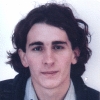 1.8.2012 Group
1.8.2012 Group
Mário Ziman has finished his postdoctoral research stay (as SCIEX fellow) in the group of Prof. Renato Renner at ETH Zurich and returned back to Bratislava. Welcome! |
 31.7.2012 Research
31.7.2012 Research
Quantum Speedup by Quantum Annealing
We study the glued-trees problem from A. M. Childs, R. Cleve, E. Deotto, E. Farhi, S. Gutmann, and D. Spielman, in Proceedings of the 35th Annual ACM Symposium on Theory of Computing (ACM, San Diego, CA, 2003), p. 59. in the adiabatic model of quantum computing and provide an annealing schedule to solve an oracular problem exponentially faster than classically possible. The Hamiltonians involved in the quantum annealing do not suffer from the so-called sign problem. Unlike the typical scenario, our schedule is efficient even though the minimum energy gap of the Hamiltonians is exponentially small in the problem size. We discuss generalizations based on initial-state randomization to avoid some slowdowns in adiabatic quantum computing due to small gaps.
by Rolando D. Somma, Daniel Nagaj, Maria Kieferova
Phys. Rev. Lett. 109, 050501 (2012) |+++| QESSENCE (2010-248095, APVV DO7RP-0002-10), COQI (APVV-0646-10), QWAC (APVV LPP-0430-09) |
|
Simulation of indivisible qubit channels in collision models
A sequence of controlled collisions between a quantum system and its environment (composed of a set of quantum objects) naturally simulates (with arbitrary precision) any Markovian quantum dynamics of the system under consideration. In this paper we propose and study the problem of simulation of an arbitrary quantum channel via collision models. We show that a correlated environment is capable to simulate non-Markovian evolutions leading to any indivisible qubit channel. In particular, we derive the corresponding master equation generating a continuous time non-Markovian dynamics implementing the universal NOT gate being an example of the most non-Markovian quantum channels.
by Tomáš Rybár, Sergey N. Filippov, Mário Ziman, and Vladimír Bužek
J. Phys. B: At. Mol. Opt. Phys. 45 (2012) 154006 (6pp) |+++| QWAEN (VEGA 2/0092/09), COQI (APVV-0646-10), FP7 COQUIT and APVV SK-PT-0008-10. |
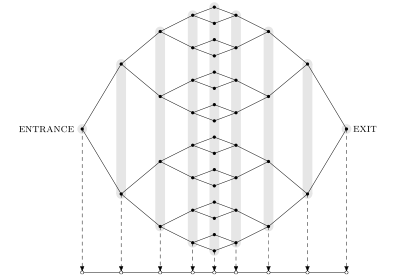 20.7.2012 Research
20.7.2012 Research
Quantum walks
This tutorial article showcases the many varieties and uses of quantum walks. Discrete time quantum walks are introduced as counterparts of classical random walks. The emphasis is on the connections and differences between the two types of processes (with rather different underlying dynamics) for producing random distributions. We discuss algorithmic applications for graph-searching and compare the two approaches. Next, we look at quantization of Markov chains and show how it can lead to speedups for sampling schemes. Finally, we turn to continuous time quantum walks and their applications, which provide interesting (even exponential) speedups over classical approaches.
by Daniel Reitzner, Daniel Nagaj, Vladimír Bužek
Acta Physica Slovaca 61, No.6, 603-725 (2011) |+++| QWAEN (VEGA 2/0092/09), COQI (APVV-0646-10), FP7 COQUIT and APVV SK-PT-0008-10. |
 27.6.2012
27.6.2012
Quantum walks as a probe of structural anomalies in graphs
We study how quantum walks can be used to find structural anomalies in graphs via several examples. Two of our examples are based on star graphs, graphs with a single central vertex to which the other vertices, which we call external vertices, are connected by edges. In the basic star graph, these are the only edges. If we now connect a subset of the external vertices to form a complete subgraph, a quantum walk can be used to find these vertices with a quantum speedup. Thus, under some circumstances, a quantum walk can be used to locate where the connectivity of a network changes. We also look at the case of two stars connected at one of their external vertices. A quantum walk can find the vertex shared by both graphs, again with a quantum speedup. This provides an example of using a quantum walk in order to find where two networks are connected. Finally, we use a quantum walk on a complete bipartite graph to find an extra edge that destroys the bipartite nature of the graph.
by Mark Hillery, Hongjun Zheng, Edgar Feldman, Daniel Reitzner, Vladimir Bužek
Phys. Rev. A 85, 062325 (2012) |+++| |
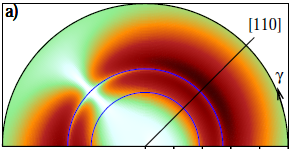 12.6.2012 Research paper
12.6.2012 Research paper
Theory of Spin Relaxation in Two-Electron Lateral Coupled Quantum Dots
A global quantitative picture of the phonon-induced two-electron spin relaxation in GaAs double quantum dots is presented using highly accurate numerics. Wide regimes of interdot coupling, magnetic field magnitude and orientation, and detuning are explored in the presence of a nuclear bath. Most important, the giant magnetic anisotropy of the singlet-triplet relaxation can be controlled by detuning switching the principal anisotropy axes: a protected state becomes unprotected upon detuning and vice versa. It is also established that nuclear spins can dominate spin relaxation for unpolarized triplets even at high magnetic fields, contrary to common belief.
by Martin Raith, Peter Stano, Fabio Baruffa, and Jaroslav Fabian
Phys. Rev. Lett. 108, 246602 (2012) |+++| QESSENCE (2010-248095, APVV DO7RP-0002-10), META-QUTE (ITMS NFP 26240120022), COQI (APVV-0646-10), CE SAS QUTE |
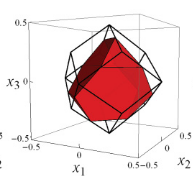 1.6.2012 Research paper
1.6.2012 Research paper
Probability-based comparison of quantum states
We address the following state comparison problem: is it possible to design an experiment enabling us to unambiguously decide (based on the observed outcome statistics) on the sameness or difference of two unknown state preparations without revealing complete information about the states? We find that the claim “the same” can never be concluded without any doubts unless the information is complete. Moreover, we prove that a universal comparison (that perfectly distinguishes all states) also requires complete information about the states. Nevertheless, for some measurements, the probability distribution of outcomes still allows one to make an unambiguous conclusion regarding the difference between the states even in the case of incomplete information. We analyze an efficiency of such a comparison of qudit states when it is based on the swap measurement. For qubit states, we consider in detail the performance of special families of two-valued measurements, enabling us to successfully compare at most half of the pairs of states. Finally, we introduce almost-universal comparison measurements which can distinguish almost all nonidentical states (up to a set of measure zero). The explicit form of such measurements with two and more outcomes is found in any dimension.
by Sergey N. Filippov and Mário Ziman
Phys. Rev. A 85, 062301 (2012) |+++| QESSENCE (2010-248095, APVV DO7RP-0002-10), TEQUDE (VEGA 2/0092/11), SCIEX Fellowship 10.271 |
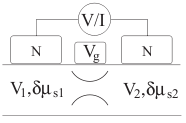 1.6.2012 Research paper
1.6.2012 Research paper
Nonlinear spin to charge conversion in mesoscopic structures
Motivated by recent experiments [ I. J. Vera-Marun, V. Ranjan and B. J. van Wees Nat. Phys. 8 313 (2012)], we formulate a nonlinear theory of spin transport in quantum coherent conductors. We show how a mesoscopic constriction with energy-dependent transmission can convert a spin current injected by a spin accumulation into an electric signal, relying neither on magnetic nor exchange fields. When the transmission through the constriction is spin independent, the spin-charge coupling is nonlinear, with an electric signal that is quadratic in the accumulation. We estimate that gated mesoscopic constrictions have a sensitivity that allows to detect accumulations much smaller than a percent of the Fermi energy.
by Peter Stano, Jaroslav Fabian, and Philippe Jacquod
Phys. Rev. B 85, 241301(R) |+++| QESSENCE (2010-248095, APVV DO7RP-0002-10), META-QUTE (ITMS NFP 26240120022), COQI (APVV-0646-10), CE SAS QUTE |
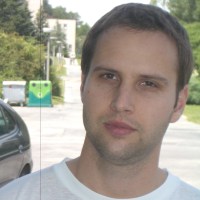 4.5.2012 Group update
4.5.2012 Group update
Peter Rapčan has received Schwarz postdoctoral stipendium lasting 4 years since 01/05/2012. Congratulations! The following members from our group received this fellowship before: Peter Štelmachovič, Mário Ziman, Jozef Košík, Peter Staňo, Daniel Nagaj and Daniel Reitzner. |
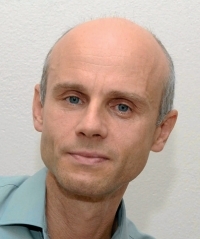 1.5.2012 Group update
1.5.2012 Group update
Since 01/05/2012 doc. Miroslav Grajcar has joined our group. Simultaneously, he is a lecturer at Faculty of Mathematics, Physics and Informatics of Comenius University in Bratislava. He will be leading the newly established Laboratory of low-temperature superconductors being a joint laboratory of Comenius University and Institute of Physics. The laboratory is built and equipped with the help of EU structural funds via the projects QUTE and meta-QUTE. |
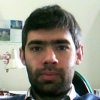 1.5.2012 Group update
1.5.2012 Group update
Dr. Stefano Fachcini has finished on 31/04/2012 his 6 months postdoctoral stay in our group. We wish him all the best in his future life. |
 30.3.2012 Research paper
30.3.2012 Research paper
Memory cost of quantum protocols
We consider the problem of minimizing the ancillary systems required to realize an arbitrary strategy of a quantum protocol, with the assistance of classical memory. For this purpose we introduce the notion of memory cost of a strategy to measure the resources required in terms of ancillary dimension. We provide a condition for the cost to be equal to a given value, and we use this result to evaluate the cost in some special cases. As an example, we show that any covariant protocol for the cloning of a unitary transformation requires at most one ancillary qubit. We also prove that the memory cost has to be determined globally and cannot be calculated by optimizing the resources independently at each step of the strategy.
by Alessandro Bisio, Giacomo Mauro D'Ariano, Paolo Perinotti, Michal Sedlak
Phys. Rev. A 85, 032333 (2012) |+++| NONE |
 27.3.2012 Research paper
27.3.2012 Research paper
Universal two-body-Hamiltonian quantum computing
We present a Hamiltonian quantum-computation scheme universal for quantum computation. Our Hamiltonian is a sum of a polynomial number (in the number of gates L in the quantum circuit) of constant-norm, time-independent, two-body interaction terms. Furthermore, each qubit in the system interacts only with a constant number of other qubits in a three-layer, geometrically local layout. The computer runs in three steps—it starts in a simple initial product state, evolves according to a time-independent Hamiltonian for time of order L2 (up to logarithmic factors), and finishes with a two-qubit measurement. Our model improves previous universal two-local-Hamiltonian constructions, as it avoids using perturbation gadgets and large energy-penalty terms in the Hamiltonian, which would result in a large required run time.
by Daniel Nagaj
Phys. Rev. A 85, 032330 (2012) |+++| QESSENCE (2010-248095, APVV DO7RP-0002-10), QWAC (APVV LPP-0430-09), META-QUTE (ITMS Project No. 26240120022) |
 26.3.2012 Research paper
26.3.2012 Research paper
Quantum Walks on Necklaces and Mixing
We analyze continuous-time quantum walks on necklace graphs - cyclical graphs consisting of many copies of a smaller graph (pearl). Using a Bloch-type ansatz for the eigenfunctions, we block-diagonalize the Hamiltonian, reducing the effective size of the problem to the size of a single pearl. We then present a general approach for showing that the mixing time scales (with growing size of the necklace) similarly to that of a simple walk on a cycle. Finally, we present results for mixing on several necklace graphs.
by
Maria Kieferova, Daniel Nagaj
International Journal of Quantum Information, Vol.10, Issue 2, 1250025 (2012) |+++| QESSENCE (2010-248095, APVV DO7RP-0002-10), QWAEN (VEGA 2/0092/09) QWAC (APVV LPP-0430-09), META-QUTE (ITMS Project No. 26240120022) |
 7.3.2012 Research paper
7.3.2012 Research paper
Achieving perfect completeness in classical-witness quantum Merlin-Arthur proof systems
This paper proves that classical-witness quantum Merlin-Arthur proof systems can achieve perfect completeness. That is, QCMA = QCMA1. This holds under any gate set with which the Hadamard and arbitrary classical reversible transformations can be exactly implemented, e.g., Hadamard, Toffoli, NOT. The proof is quantumly nonrelativizing, and uses a simple but novel quantum technique that additively adjusts the success probability, which may be of independent interest.
by Stephen P. Jordan, Hirotada Kobayashi, Daniel Nagaj, and Harumichi Nishimura
Quantum Information and Computation 12, 461-471 (2012) |+++| QESSENCE (2010-248095, APVV DO7RP-0002-10), QWAC (APVV LPP-0430-09), COQI (APVV-0646-10), |
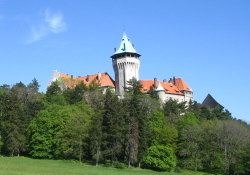 1.3.2012 Conference
1.3.2012 Conference
Since Thursday 07/06/2012 till Sunday 10/06/2012 the Smolenice castle will be hosting the 9th Central European Quantum Information Processing workshop (CEQIP 2012) focused on recent developments in the area of quantum information processing. Visit the workshop website for more up-to-date information |+++| |
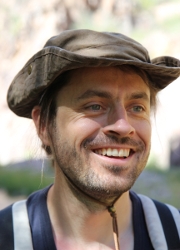 1.2.2012 Group update
1.2.2012 Group update
Dr. Peter Staňo was awarded a prestigous SCIEX Fellowship. Since February, 1st, he takes one-year post-doc position in the group of Prof. Daniel Loss in Basel, Switzerland. We wish him a fruitful stay. |
 4.1.2012 Research paper
4.1.2012 Research paper
Local two-qubit entanglement-annihilating channels
We address the problem of the robustness of entanglement of bipartite systems (qubits) interacting with dynamically independent environments. In particular, we focus on the characterization of so-called local entanglement-annihilating (EA) two-qubit channels, which set the maximum permissible noise level allowing us to perform entanglement-enabled experiments. The differences, but also the subtle relations, between entanglement-breaking and local EA channels are emphasized. A detailed characterization of the latter ones is provided for a variety of channels including depolarizing, unital, (generalized) amplitude-damping, and extremal channels. We also consider the convexity structure of local EA qubit channels and introduce a concept of EA duality.
by Sergey N. Filippov, Tomáš Rybár, Mário Ziman
Phys. Rev. A 85, 012303 (2012) |+++| QESSENCE (2010-248095, APVV DO7RP-0002-10), QWAEN (VEGA 2/0092/09), QWOSSI (APVV LPP-0264-07), CE SAV QUTE |


